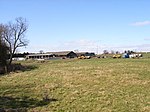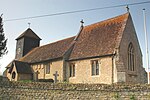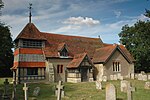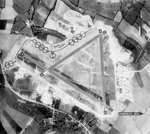Beauforest House
Grade II listed buildings in OxfordshireGrade II listed houses

Beauforest House is a historic house, near Newington, Oxfordshire, England. It has been listed Grade II on the National Heritage List for England since 1963.It a former rectory and dates back to about 1500, and was extended in the late 18th century and again in about 1800.In 1951, The Rectory, as it was then known, was sold to art historian and administrator Sir John Rothenstein, who renamed it Beauforest House. In 2014, it was owned by Christopher Brett, 5th Viscount Esher.As of November 2021, it is for sale at £4.5 million.
Excerpt from the Wikipedia article Beauforest House (License: CC BY-SA 3.0, Authors, Images).Beauforest House
A329, South Oxfordshire
Geographical coordinates (GPS) Address Nearby Places Show on map
Geographical coordinates (GPS)
| Latitude | Longitude |
|---|---|
| N 51.66452 ° | E -1.1213 ° |
Address
A329
OX10 7AH South Oxfordshire
England, United Kingdom
Open on Google Maps










